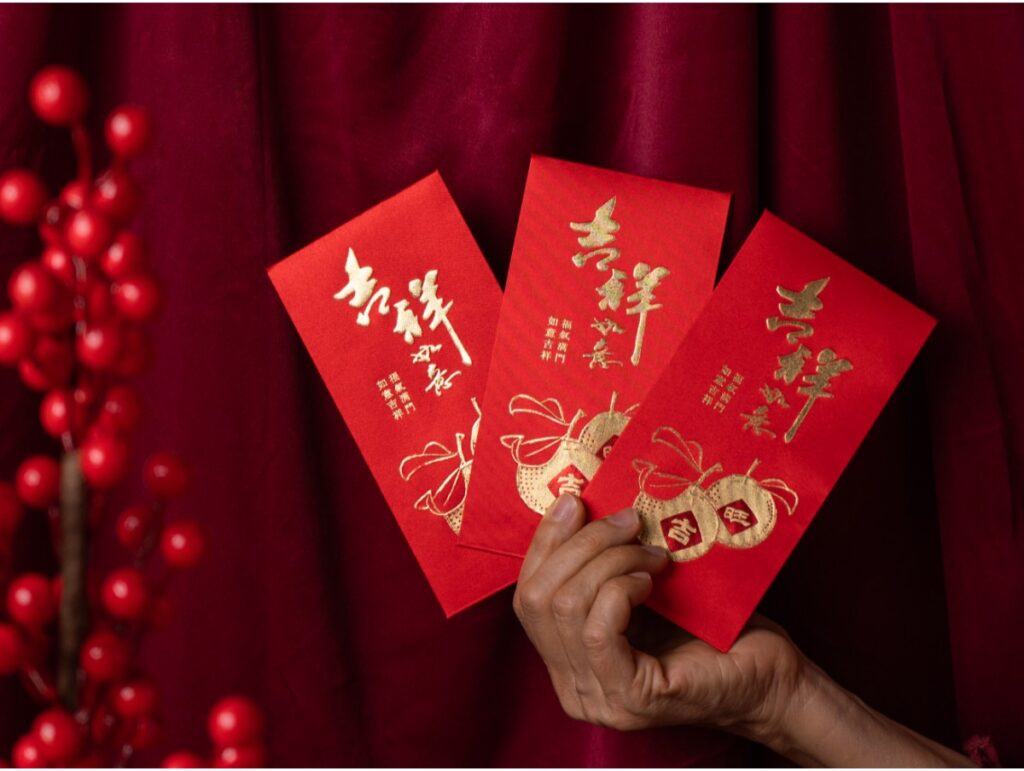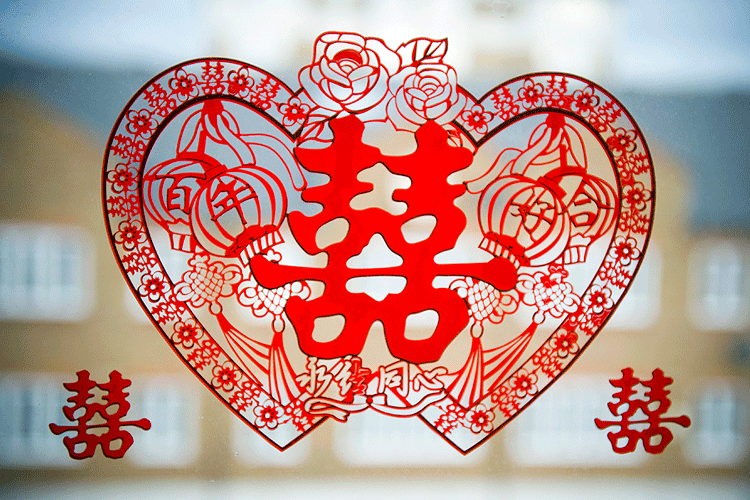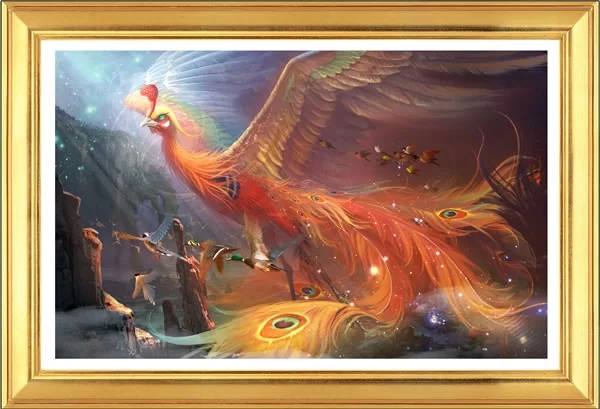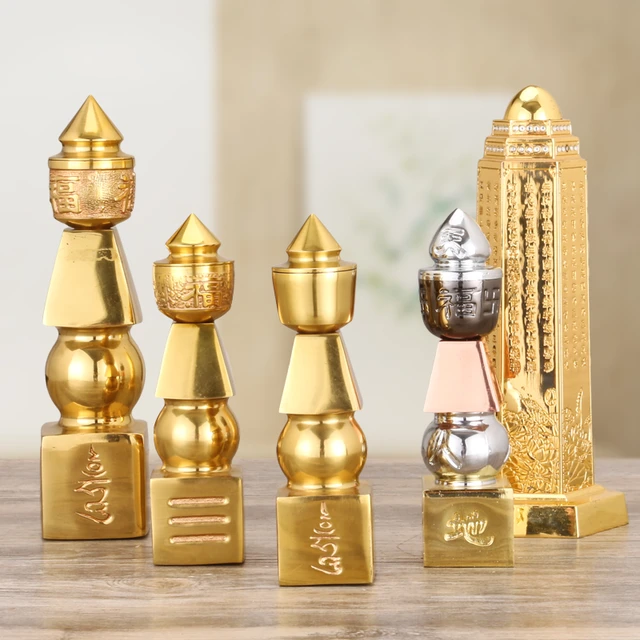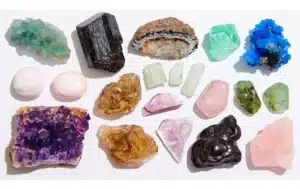One of the appealing aspects of Feng Shui lies in incorporating Chinese good luck charms into everyday life. These are more than mere decorations; they are symbolic elements designed with the intention of enhancing the vital energy (Qi) in your surroundings. These talismans offer a multi-dimensional approach to infusing positive energy into your living space. If you use these powerful talismans in your home decor or even carry them with you, you open the door to inviting not only good luck but also a wide range of opportunities, prosperity and happy emotions come into your life.
1. Red Envelopes
Red envelopes, commonly known as “Hongbao” in Mandarin and “Lai See” in Cantonese, are a traditional Chinese symbol of good fortune, prosperity and well-being. Often crafted from red paper, a color that symbolizes luck and vitality in Chinese culture, these envelopes contain monetary gifts and are distributed during special occasions such as Lunar New Year, weddings and other significant events.
Feng Shui, an ancient Chinese practice of harmonizing one’s environment, places a high value on these red envelopes as good luck charms. There are several reasons for this cultural significance. First, red is considered the most auspicious color in Feng Shui, associated with life force and vitality. The color red counteracts negative energy and is believed to protect you from harmful influences.
Second, the act of giving and receiving the envelope fosters a reciprocal flow of positive energy, or Qi, between the giver and the recipient. It’s not just the monetary value contained within that matters, but also the intention behind the gift, amplifying its auspicious influence on both parties.
Lastly, the symbolism extends to the numeric value of the money enclosed, which is carefully chosen based on numerology. For example, even-numbered sums are favored over odd-numbered ones as they are thought to bring double luck. The number 8, pronounced as ‘Ba’ in Mandarin—similar to the word for prosperity (‘Fa’)—is especially considered lucky.
2. Double Happiness Symbol
Double happiness symbol known as “Shuang Xi” in Chinese, is an iconic representation of joy and happiness, created by duplicating the Chinese character for ‘joy’. This symbol is highly revered in Chinese culture and traditions, particularly in the context of marriage and romantic commitment. This powerful symbol encapsulates two critical elements of Feng Shui: positivity and symmetry, thereby making it a sought-after good luck charm.
In Feng Shui, double happiness symbol aligns with the concept of duality, emphasizing the harmonious balance between partners in a relationship. Its symmetrical structure reinforces the idea of equilibrium and stability, essential attributes that contribute to positive Qi.
Moreover, double happiness symbol often appears in the auspicious color red, amplifying its favorable influences. Red, as noted in Feng Shui, is a vibrant color associated with life force, good fortune and protection against negative energies. When you combine this potent color with the joyful resonance of the double happiness symbol, a powerful good luck charm is created that can significantly augment the positive energies in your life and surroundings.
3. Coins of the Ten Emperors
The coins of the Ten Emperors are a set of tokens that symbolize the Ten Emperors who reigned during China’s illustrious Qin Dynasty. These coins serve as emblematic representations of the imperial reserves and the prosperity that marked this historical era. In the realm of Feng Shui, these coins are considered powerful tools to attract wealth, abundance, and good fortune from ethical and rightful sources.
One of the core principles of Feng Shui is the strategic placement of objects to optimize the flow of Qi, the life force that governs well-being and prosperity. When you place the coins of the Ten Emperors near the entryway of your home or office, you invite beneficial energies associated with abundance into your space. The entryway acts as the ‘mouth of Qi,’ where energies enter and circulate. Hence, positioning these coins near the entrance is believed to attract financial blessings and open doors for economic opportunities.
Furthermore, these coins can be positioned according to the Feng Shui Bagua, a grid that maps out various life aspects, including wealth, relationships and career. Depending on your specific intentions—be it enhancing career prospects, elevating your financial status, or strengthening personal relationships—these coins can be placed in the corresponding area of the Bagua to maximize their effectiveness.
Additionally, placing coins of the Ten Emperors behind your desk chair can offer career support. In doing so, you metaphorically secure the backing of these powerful rulers, thereby fortifying your own position and reputation in your professional endeavors.
You can refer to: How to Use Feng Shui Coins to Attract Fortune
4. Dragon Symbols
Dragon symbols are iconic representations deeply embedded in various Asian cultures, particularly in China. Unlike Western lore, where dragons are often portrayed as malevolent creatures, in the Asian context, dragons are considered beneficent, powerful beings.
Renowned for their ability to control natural elements such as water, they are believed to bring rain, ensuring fruitful harvests and natural abundance. Within the framework of Feng Shui, dragon symbols serve as good luck charms that hold multi-faceted significance, offering protection, prosperity and empowerment.
In Feng Shui, Dragon Symbol align with this ancient practice by fostering an environment conducive to the accumulation and circulation of positive energy. When you place an image or representation of a dragon in your home, you invite the robust energies of prosperity and good fortune, bolstered by the creature’s mythological role in bringing rain and ensuring harvests.
Moreover, dragons are symbolic of strength, courage and resilience. When strategically located within your home, these symbols serve as protectors, warding off negative influences and potential threats to your well-being. The protective qualities of the dragon resonate with the Feng Shui principle of safeguarding one’s environment, allowing you to lead a life with minimized obstacles and enhanced security.
Additionally, dragon symbols can be utilized for targeted Feng Shui applications depending on your specific needs. If you are seeking career advancement or personal growth, positioning a Dragon Symbol in the northern area of your home, associated with the career sector in the Feng Shui Bagua, can lend you the mythical creature’s empowering energies.
5. Endless Knot
The endless knot also known as the Mystic Knot or Eternal Knot, is a complex loop that has no start or end, representing the cyclical nature of life and eternity. While it finds resonance in various cultures, its significance in Asian traditions, particularly in Buddhism and Chinese culture, is exceptionally profound.
In Buddhism, endless knot is one of the Eight Auspicious Symbols, symbolizing eternal compassion and wisdom. In Chinese folklore and Feng Shui, it embodies good luck, longevity and harmony.
Within the framework of Feng Shui, endless knot harmonizes with principles that aim to optimize the flow of Qi, the vital life energy. The Endless knot’s closed-loop signifies a balanced, uninterrupted circulation of Qi, representing an equilibrium that contributes to well-being and prosperity. When you incorporate this symbol into your home or workspace, you essentially draw upon energies that facilitate a harmonious balance between different aspects of life, be it personal, relational, or professional.
For those seeking to align specific life aspects with Feng Shui principles, endless knot can be positioned according to the Bagua, the Feng Shui energy map. Depending on your focal intent—whether it’s to enhance your longevity, fortify relationships, or improve your luck—the endless knot can be placed in the corresponding sector of the Bagua to concentrate its positive impact.
6. Chinese Zodiac Best Friends
The Chinese Zodiac, known as Sheng Xiao, is deeply rooted in Chinese tradition, folklore, and ritualistic beliefs. It is based on a 12-year cycle, where each year corresponds to a specific animal sign. These signs are: Rat, Ox, Tiger, Rabbit, Dragon, Snake, Horse, Ram (or Goat), Monkey, Rooster, Dog, and Pig.
These zodiac animals not only reflect certain personality traits of individuals born in their corresponding years but also play a significant role in the practice of Feng Shui – the ancient Chinese art of harmonizing individuals with their surrounding environment.
The concept of ‘Zodiac Best Friends’ is an intriguing facet of this belief system. Just as individuals have friends with whom they share deeper bonds and connections, the same is believed for zodiac animals. These are:
- Rat and Ox
- Tiger and Pig
- Snake and Monkey
- Horse and Ram
- Dog, Dragon, and Rooster
When you identify with a particular zodiac sign, aligning with its best friend can usher in positive energy and good fortune. This alignment is typically achieved through charms or symbolic representations.
Feng Shui places significant emphasis on positioning and orientation, believing that the proper arrangement can tap into positive energies. In this context, Chinese zodiac charms are utilized as conduits to channel good luck and prosperity. By understanding one’s zodiac animal and its corresponding best friend, you can harness this relationship for improved fortune and wellbeing.
For example, if you were born in the year of the Rat, associating with symbolic representations of the Ox, its best friend, can be beneficial. This can be through jewelry, statues, or even imagery.
7. Foo Dogs
Foo Dogs, also known as Chinese Guardian Lions, are mythical creatures traditionally sculpted in pairs to stand guard at entrances of buildings, temples and homes.
Despite the name, these aren’t dogs but rather lions that symbolize strength, bravery and protection in Chinese culture. In the realm of Feng Shui, Foo Dogs serve as powerful talismans that provide protective energies while also attracting good fortune.
When you place Foo Dogs at the entrance of your home or office, you are essentially establishing a protective barrier that filters incoming energies, ensuring that only beneficial Qi enters your space.
The protective attributes of Foo Dogs also resonate with the Feng Shui principle of creating a harmonious environment, free of disruptive elements. These guardian lions are often carved with intricate details, signifying not just craftsmanship but also complex layers of protection against various forms of negativity—be it malicious intentions, negative energies, or even harmful spiritual influences.
8. Laughing Buddha
Laughing Buddha also known as Budai, is a popular figure in Chinese folklore and is often conflated with Siddhartha Gautama, the founder of Buddhism. Characterized by a jolly disposition and an ample belly, the Laughing Buddha is a symbol of happiness, contentment and prosperity. In the context of Feng Shui, the Laughing Buddha is considered an auspicious charm that not only attracts wealth but also promotes emotional well-being.
The Laughing Buddha epitomizes this by exuding energies of joy and abundance. When you incorporate this effervescent figure into your home or office, you invite an atmosphere replete with positivity and good fortune. The Laughing Buddha is often depicted carrying a sack filled with treasures, denoting the flow of material and spiritual riches into one’s life.
Placement is key in Feng Shui, and the Laughing Buddha is no exception. Typically, the figure is placed facing the entrance, welcoming all who enter with positive energy while also guarding against harmful influences. This strategic placement ensures that beneficial Qi is attracted while negative energy is repelled, creating a balanced, harmonious environment.
9. Phoenix Symbol
Phoenix symbol or Fenghuang in Chinese mythology, represents an immortal bird associated with transformation, rebirth, and longevity. In Chinese culture, the Phoenix is often paired with the dragon to symbolize marital harmony and is considered one of the Four Celestial Animals. Within the context of Feng Shui, Phoenix symbol serves as a potent emblem for renewal, resilience and endless possibilities.
Feng Shui, as a practice, aims to harmonize the flow of Qi, the essential life force that governs prosperity and well-being. The Phoenix, with its connotations of renewal and transformation, perfectly aligns with these principles. When you display a Phoenix symbol in your home or workspace, you are essentially inviting energies that encourage rejuvenation and opportunities for new beginnings. The Phoenix’s transformative powers resonate with the Feng Shui objective of channeling positive energies to overcome life’s obstacles.
Phoenix symbol also serves to balance Yin and Yang energies in your environment. Its association with renewal and rebirth often means that it can harmonize disparate elements, creating equilibrium and a sense of holistic well-being. When strategically placed in your living space, the Phoenix invites energies that elevate both your personal and professional life.
Utilizing the Bagua, a key Feng Shui tool that categorizes various life aspects like relationships, career, and health, can further amplify the Phoenix’s positive effects. Depending on your specific goals, the Phoenix symbol can be placed in an appropriate sector of the Bagua. For example, if you seek professional growth or career advancements, positioning the Phoenix in the career sector of the Bagua could be beneficial.
10. Five-Element Pagoda
Five-Element Pagoda is a quintessential Feng Shui artifact that symbolizes the harmonization of the five elements: wood, fire, earth, metal, and water. Originating from Chinese cosmology, these five elements serve as the building blocks of the universe and are believed to influence the balance of energies, within your environment. In Feng Shui, the Five-Element Pagoda is often used as a remedy to neutralize negative energies and enhance auspicious ones.
When you place this pagoda in your home or office, you’re essentially harmonizing conflicting energies and fostering an environment conducive to well-being and prosperity. Its structural design, often intricate, reflects the interconnectedness of the elements and symbolizes the unity of the universe.
Placement of the Five-Element Pagoda is crucial for maximizing its efficacy. It can be situated in specific sectors of your living or working space based on the annual flying star chart, a Feng Shui tool that provides insight into the shifting energies of the year. When placed correctly, this pagoda can nullify harmful energies associated with inauspicious stars, thereby promoting a balanced and harmonious atmosphere.
You can also make use of the Feng Shui Bagua map to locate the ideal spot for the Five-Element Pagoda. Depending on what you aim to achieve—be it improved health, increased wealth, or enhanced relationships—the pagoda can be positioned in the relevant area of the Bagua to foster those specific outcomes.
The diverse array of Chinese good luck charms offer more than mere aesthetic appeal. They are potent instruments in the Feng Shui toolkit, help to creating spaces that not only look aesthetically pleasing but also resonate with balanced, positive energies conducive to a multitude of life-enhancing benefits.


